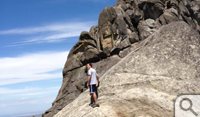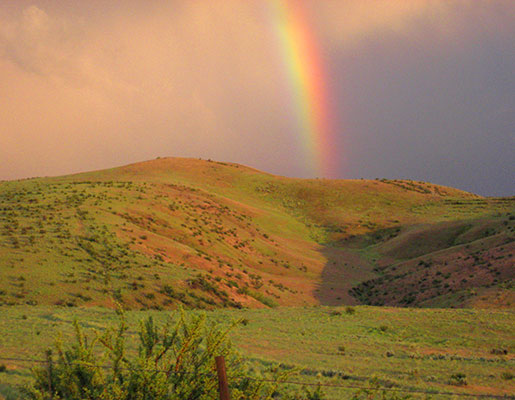Wide open spaces
Monroe Scholar determines economic value of the Foothills
The numbers didn’t seem right.
“I just didn’t expect the figure to be so big,” says Niall Garrahan ’14.
Garrahan was looking at calculations related to the value of land purchased by the City of Boise, Idaho. Boiseans had approved a tax levy to acquire the 10,351 acres known as the Foothills and Garrahan had determined that it was a good investment. The city had invested $10.9 million in the purchase of the Foothills in 2001. When he looked up from his calculator, Garrahan’s figures showed that the value of the Foothills to Boise was more than $11 million for one year, 2011—and it seemed like a lot of money.
“Eleven million dollars is a lot of money, even when you’re talking about things the government does,” he marveled, “but eleven million dollars for some trails outside of Boise, Idaho?”
Garrahan was studying the value of the Foothills through William & Mary’s James Monroe Scholars Program, an initiative that provides qualified students with grants to perform summer research projects. Garrahan distilled his findings into a report, “Open Land Utility: A Study of Conservation, Ecosystem Services, and Recreation in Boise, Idaho,” which both state and local officials in Idaho have found to be a valuable reference.
So what makes the Foothills worth so much?
Garrahan explained that the value comes from the ecosystem services, health benefits and access the trails themselves provide. The Foothills are an excellent spot for hiking, biking and horseback riding. There are medical benefits that ensue from such strenuous exercise, and there is value in the social capital of volunteer hours, financial donations and community cohesion.
“People out West, they love their outdoors,” Garrahan said. “It’s part of the culture out there. If the population really cares about something like that, then you provide them with an awesome resource like the Foothills. It’s definitely going to be worth more.”
A trail leads from hiker to researcher
 Garrahan took a recreational path to the project himself.
Looking around for an idea for a summer Monroe Project, Garrahan found himself
enjoying the trails of the Foothills during a visit to family in Boise in early
2012. After discovering that residents had voted to raise their own taxes in
order to purchase the Foothills, Garrahan says he wanted to study the economic
perspective, “almost as an investment.” The following summer, Garrahan bought a
ticket West and began his project.
Garrahan took a recreational path to the project himself.
Looking around for an idea for a summer Monroe Project, Garrahan found himself
enjoying the trails of the Foothills during a visit to family in Boise in early
2012. After discovering that residents had voted to raise their own taxes in
order to purchase the Foothills, Garrahan says he wanted to study the economic
perspective, “almost as an investment.” The following summer, Garrahan bought a
ticket West and began his project.
Putting a price tag on the Foothills wasn’t easy. After starting, then abandoning, a software-based approach that wasn’t working out at all, Garrahan decided to turn to similar previous research by well-respected economic firms and non-profits.
“I started researching people who had done things like this before. There were all sorts of different models that I borrowed bits and pieces from different reports,” he says of his Plan B. That’s when he realized he was going to need a little support from the city of Boise.
As a volunteer trail ranger in the Foothills for the Ridge to Rivers trail system, Garrahan’s aunt was put him in touch with Julia Grant, the Foothills and open space manager for the City of Boise. Grant gave Garrahan access to all of the resources he needed, including access to the City of Boise’s Geographic Information Systems (GIS) professionals. It was another investment by Boise that paid off.
Project attracts high interest
Grant says that Garrahan’s research continues to be of high interest in Idaho. A recent release of the paper and Garrahan’s findings in the press has led to other areas of Idaho expressing similar project interests, as well as high profile attention to this kind of economic analysis of conserved lands and their range of benefits.
“We just used the research when we had a briefing on the report and the Foothills program with congressional staff from both our U.S. senators’ and representatives’ offices,” Grant says. “Niall’s work has impressed a lot of people.”
Grant notes that Boise was able to obtain much of the Foothills acreage through land swaps and gifts of land. She also says initial discussions about passing the $10 million Foothills Serial Levy and protecting land in the Foothills didn’t include any potential economic benefit. Boise had simply sought to protect water, wildlife and vegetation, while increasing recreational areas and restricting overdevelopment and traffic. Boise ended up getting all of this and more, she noted.
An economics and public policy double major at William & Mary, Garrahan sees some potential in his research for his own future.
“I thought it was fun,” he said. “I have no idea what I want to do in life, but I wouldn’t be opposed to doing something like this.”














